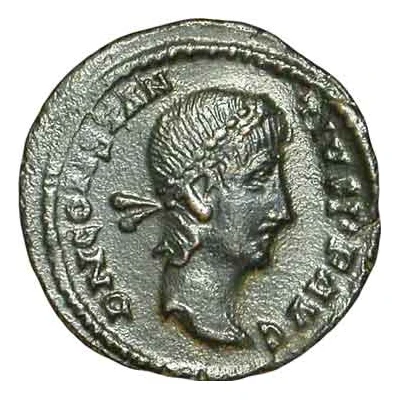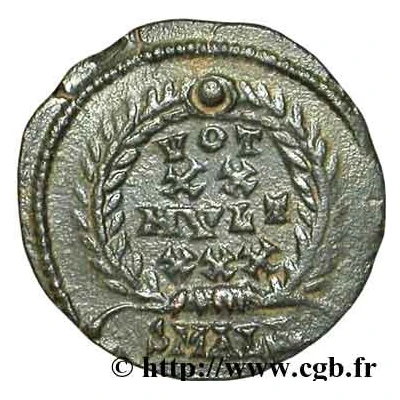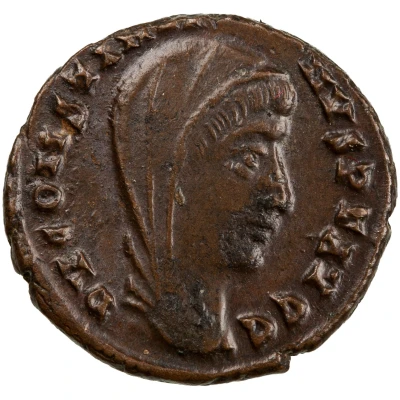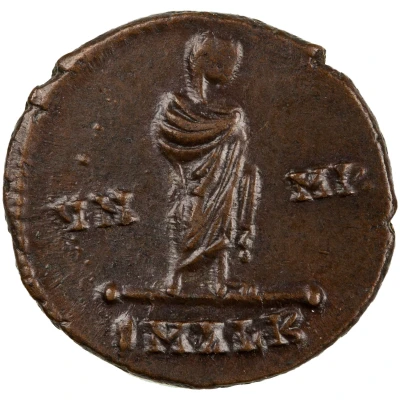


© CGB
Nummus - Constantius II VOT XX MVLT XXX; Alexandria
| Bronze | 1.32 g | 16 mm |
| Issuer | Rome › Roman Empire (27 BC - 395 AD) |
|---|---|
| Emperor | Constantius II (337-361) |
| Type | Standard circulation coin |
| Years | 347-348 |
| Value | Nummus (1⁄7200) |
| Currency | Solidus, Reform of Constantine (AD 310/324 – 395) |
| Composition | Bronze |
| Weight | 1.32 g |
| Diameter | 16 mm |
| Shape | Round (irregular) |
| Technique | Hammered |
| Orientation | Coin alignment ↑↓ |
| Demonetized | Yes |
| Updated | 2024-10-04 |
| Numista | N#76199 |
|---|---|
| Rarity index | 70% |
Reverse
Legend in a crown
Script: Latin
Lettering: VOT XX MVLT XXX
Translation:
"Votis vicennalibus Multis tricennalibus"
(Wishes for the twentieth anniversary of reign and more for the incoming thirtieth anniversary)
Edge
Rough
Comment
The decennalia of Constans begin in 342 and the vicennalia of Constantius II in 343. If these coins are well dated to 347-348, they could commemorate the fifteenth anniversary for Constans and the twenty-fifth for Constantius. For this issue, the workshop worked with ten offices. As the Empire became Christian, the Greek letter theta, which also symbolized death for the pagans (thanatos), could now be usedInteresting fact
One interesting fact about this coin is that it features the first Christian symbol, the Chi-Rho, on its reverse side. The Chi-Rho is a combination of the first two letters of the Greek word "Christos" (Χριστός), which means "Christ." This symbol was used by Emperor Constantine, who ruled from 306 to 337 AD, as a symbol of his Christian faith and was later adopted as a standard feature on Roman coins during the reign of Constantius II, who ruled from 337 to 361 AD. This coin, minted in Alexandria, Egypt, in 347-348 AD, is one of the earliest examples of a Roman coin bearing the Chi-Rho symbol.

